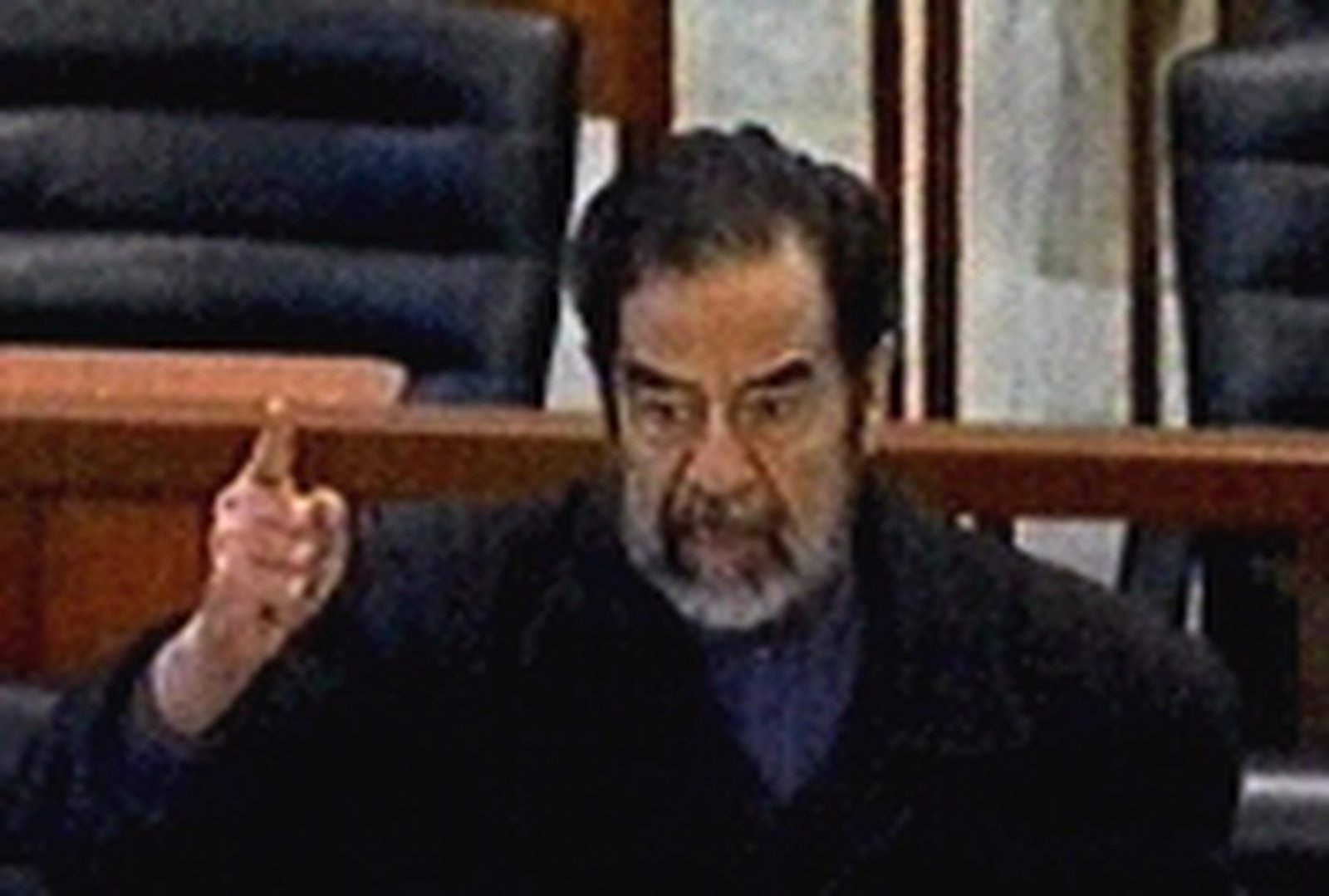

- #Saddam hussein capture pwned trial#
- #Saddam hussein capture pwned professional#
- #Saddam hussein capture pwned series#
In 1962, Israelis debated whether the execution of Eichmann would diminish the public understanding his trial and even that of the Holocaust itself. The negatives were destroyed, the bodies were cremated (ironically at Dachau), and the ashes were quietly dumped into a tributary of the Danube so that there would be no shrines to the condemned.

A single military photographer took pictures of the bodies after hanging to prove that the condemned were indeed dead.


#Saddam hussein capture pwned professional#
In the meantime, US Deputy Military Governor Lucius Clay rejected numerous requests from world news outlets such as Time and Life, who wanted to bring professional photographers and additional lighting to the execution chamber so that photos and films of the hangings could be displayed in their magazines and on newsreels. If the interval did not allow judicial appeals (these were prohibited before the trial), it at least allowed the drafting of clemency petitions. Before the judges pronounced sentence the American, British, French and Soviet military governors of Germany determined that the executions would take place two weeks after sentencing. The Four Powers in 1946, for instance, understood that though the Nuremberg trial itself was more important than the executions that followed, the latter could not help but color the former if done poorly. And they survive because the governments that have sponsored such trials generally have not botched the executions afterwards, thus adding images of naked, brutal vindictiveness to already identifiable legal problems. These sorts of images survive in the public consciousness despite the fact that no war crimes trial is without its flaws. Adolf Eichmann’s trial in Jerusalem in 1961 has been symbolized for the past four decades by the defendant facing his accusers from a bullet-proof booth, personifying what Hannah Arendt called the “banality of evil.” The Trial of the Major War Criminals in 1945-1946 has been remembered by the famous photos of the leading Nazis in the dock and by the famous ethical joust between US Prosecutor Robert Jackson and Hermann Göring. As such they must be properly choreographed since the difficulties in grasping their vast legal and historical scope means that for most, the trial often comes down to a few dramatic moments or poignant images. The trials of major historical figures, though legal exercises, are primarily political acts. The problem is rather the ineptness of the al-Malaki government and its American protectors in managing the denouement of Saddam’s trial. As the case of Adolf Hitler’s Deputy Rudolf Hess shows, the world does not need political prisoners who are also bona fide war criminals, since the popular memory of their guilt fades in proportion to the length of their sentence. A life sentence would have turned Saddam into a political prisoner of sorts for as long as he lived in captivity. The problem was not, as is being argued in European capitals, the death penalty as such.
#Saddam hussein capture pwned series#
The fact that the hanging was deliberately rushed before Saddam could answer for other, far larger crimes than the massacre of 143 Shi’ites at Dujail (such as the Anfal campaign which murdered 180,000 Kurds) that the execution was timed to coincide with a Sunni holiday that it was accented with a series of taunts from the witness gallery that the trap door of the gallows was opened in the middle of the condemned’s final prayer that the spectacle was captured by cell-phone cameras in the gallery and then distributed worldwide (thus becoming a barbaric public execution) and that Saddam’s body was then turned over for a tempestuous martyr’s burial near his home town of Tikrit, all suggest that Iraq’s government was far too immature politically to carry out the vital task of disposing with the country's former dictator. But the vengeful haste by the Shi’ite-dominated government of Prime Minister Nuri Kamal al-Malaki to execute the former dictator has robbed the Iraqi Supreme Tribunal of whatever legitimacy it might have had with Iraq’s Sunnis and Kurds and with the world at large. The taunts that he endured in the moments before his hanging on December 30 were nothing compared with the terror he inflicted on thousands upon thousands of his countrymen and his neighbors over the course of his brutal twenty-four year rule. As most western commentators have pointed out, we needn’t feel badly for Saddam Hussein.


 0 kommentar(er)
0 kommentar(er)
